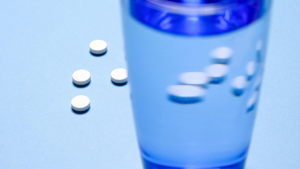A disturbing drug use trend known as “boofing” is on the rise, putting people at high risk for overdose, infection, injury, and addiction. Boofing, also called plugging, hooping, Up the Bum (UTB), shafting, booty bumping, or shelving, refers to the rectal insertion of illicit drugs or alcohol with the goal of achieving a faster, more intense high compared to other routes of administration. However, this dangerous practice can lead to serious, potentially fatal health consequences.
How Boofing Works
Boofing involves mixing a drug with water to create a solution and then squirting it into the rectum using a needleless syringe or something like a turkey baster. A wide variety of substances can be administered this way, including both stimulants and depressants:
- Cocaine and crack cocaine
- Methamphetamine
- MDMA (Ecstasy/Molly)
- Heroin
- Prescription opioids (oxycodone, hydrocodone, morphine, etc.)
- Benzodiazepines (Xanax, Valium, Ativan, etc.)
- Ketamine
- GHB
- Alcohol (called “butt chugging”)
- Psychedelics like LSD and 2C-B
Faster and Stronger High
The rectum and colon are lined with numerous blood vessels, allowing rapid and efficient absorption of drugs into the bloodstream, with effects felt in as little as 5 minutes. In comparison, snorting cocaine takes 10-15 minutes to kick in, while oral ingestion of MDMA or opioids can take 30-45 minutes for effects to start.
Increased Risk of Overdose
While some may see this increased speed and strength of intoxication as a benefit, it greatly raises the risk of overdose. It’s much harder to control the dose and timing of effects compared to other methods. Opioids like heroin and pills are especially dangerous to boof, as the rapid flooding of opioid receptors can quickly cause respiratory depression. Stimulants like cocaine and meth are also very risky, potentially causing heart attack, stroke, or seizure.
Health Complications and Injuries of Boofing
Frequent insertion of drugs in the rectum can also severely damage the delicate tissues and mucous membrane lining, causing rectal bleeding, abscesses, infection, inflammation, and even tearing or perforation of the colon wall. Sharing boofing equipment like syringes also spreads HIV, hepatitis C, and other bloodborne diseases.
Additionally, skipping the digestive tract means the body can’t trigger its natural gag reflex or vomiting response if too much of a substance is consumed. Substances absorbed rectally also cannot be purged if adverse effects occur. And in the case of boofing alcohol, intoxication is harder to monitor without being able to count drinks, making alcohol poisoning a real concern.
Addiction and Substance Abuse
Chronic substance abuse and addiction often drive people to riskier and riskier drug use behaviors, like boofing, to chase a stronger high as their tolerance grows. But boofing is an especially dangerous sign that someone’s substance use is spiraling out of control.
Seeking Professional Help
If you or someone you care about is engaging in this hazardous practice, it’s crucial to seek expert help as soon as possible. Waiting too long could result in a life-threatening overdose, serious injury, or infection. The experienced addiction professionals at The Bluffs provide evidence-based, individually tailored treatment to help you detox safely and build the healthy coping skills for lasting sobriety.
Our serene inpatient rehab facility in Ohio offers a peaceful setting and compassionate care to begin your recovery journey. We specialize in treating opioid, alcohol, stimulant, and polydrug addictions using the latest therapeutic methods and modalities. Don’t wait another day to break free from the chains of addiction. Call us anytime, 24/7, at 330-919-9228 to learn more about our renowned residential treatment programs and take the first step toward a brighter future. Recovery is possible, and we’re here to help.








